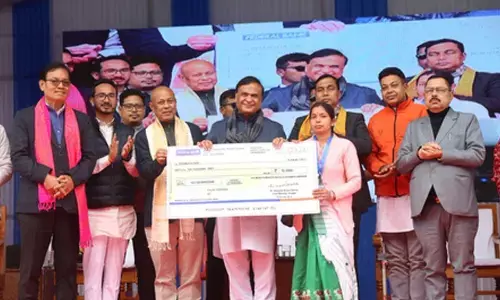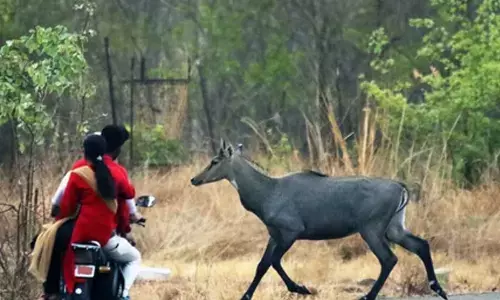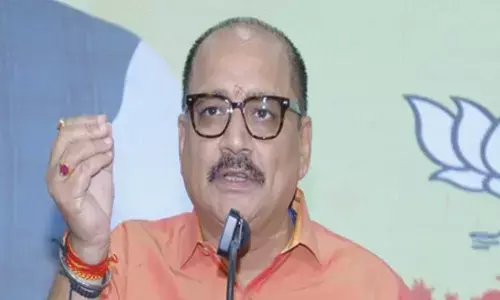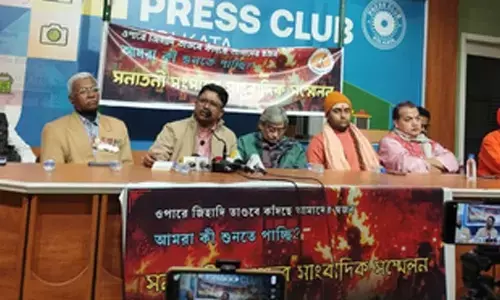The untold story
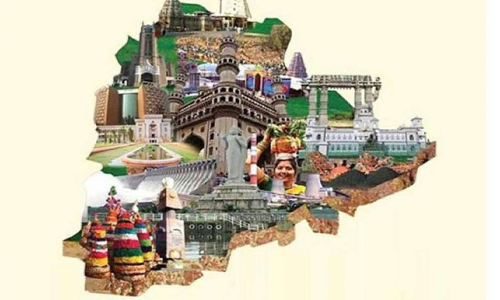
Amidst talk of high growth and investment in the State of Telangana, there are significant development fault lines that need urgent public policy attention. Such untold story of development cannot be glossed over by the political rhetoric.
Amidst talk of high growth and investment in the State of Telangana, there are significant development fault lines that need urgent public policy attention. Such untold story of development cannot be glossed over by the political rhetoric.
Urbanisation sans inclusiveness
Though Telangana is still predominantly a rural state, there is a clear trend towards faster urbanisation in the state. Urban population in the State grew by 38.12 per cent in the decade 2001 to 2011 as compared with 25.13 per cent in the preceding decade. In sharp contrast, rural population in the State grew by a modest 2.13 per cent as per the 2011 Census.
The urban growth in the state has a skewed pattern with the number of towns almost doubled in a decade; nearly one-third of the state's population live in the capital city of Hyderabad. This resulted in the coexistence of prosperity and poverty in this city.
The concentration of economic activity and the market has certainly resulted in the emergence of a developed stretch of the city while it still has one of the highest levels of slum population. Hyderabad also figures among the top 10 million-plus cities in terms of the highest number of slum households.
The unprecedented concentration of population in the state capital has certainly imposed enormous pressure on the woefully inadequate civic infrastructure, resulting in the proliferation of slums.
This demographic profile of Telangana has the following public policy priorities in terms of urban development. There is an urgent need for improvement of high-quality social infrastructure in the burgeoning towns to ensure diversification of urban population.
The economic activity needs to be diversified into smaller towns. The emphasis on inclusive growth of state capital coupled with construction of satellite towns around the capital with suitable linkages with the city would ensure a balanced development of urban Telangana.
Acute marginalisation
Dalits and tribals are the most landless sections of Telangana. The tardy implementation of land for dalits schemes is grim pointer to the gap between the public policy priorities and the social development profile of the state.
Not only this landlessness, 75 per cent of operational holdings of Scheduled Castes is marginal (below one hectare). The SCs are marginalised even in access to tenancy markets in the state. These facts put out by the Council for Social Development (CSD) Report underline the importance of resolving the land question among dalits. But, the implementation of land to dalits scheme continues to encounter headwinds.
Cropping intensity is relatively low among SCs and STs. The irrigation levels are also relatively low among the SCs and the STs.
The acute agrarian and rural distress has more debilitating impact on the marginalised communities due to humongous inequalities in accessing land among various social groups. The agrarian question in a state like Telangana should be studied with special reference to dalits to evolve proper public policy response. Mere social welfare programmes like Sub-Plan would not bring about a radical change in their socio-economic status. The livestock base is very small across all the social groups in the state.
Tribal Telangana needs top priority
Meanwhile, Telangana is predominantly a tribal State. The percentage of ST population is higher than the national average of 8.6%. There has been a significant increase in the percentage of tribal population in total population from 2.81% in 1961 to 8.19% in 1981 and further to 9.34% in 2011. The increase is mainly on account of the inclusion of certain castes under the category of STs.
The social and economic backwardness is disproportionately high among the tribals and other deprived communities. Tribal development should, therefore, get the top priority in the Telangana Budget. In fact, the socially marginalised communities are also not homogeneous. There is a significant variation among different social groups within SCs, STs and OBCs, despite several features of common deprivation.
The internal differentiation should be taken cognisance of while allocating budgetary resources. For instance, the Most Backward Castes (MBCs) and hill tribals should get relatively higher priority in budgetary outlays.
Serious indebtedness
The incidence of indebtedness is reported to be significantly high among all social groups in the state. The penetration of institutional credit among SCs is still negligible. Thus, the expansion of institutional credit structure is the paramount need in the state.
Low access to PDS
Notwithstanding the claims of Telangana government leading the nation in perceiving a welfare agenda, the disturbing reality is that a significant section among the poorest of the poor in the state does not have access to Public Distribution System (PDS), according to the CSD report.
The economically most disadvantaged sections for whom the PDS matters most find it hard to access it. The CSD report further notes that the ration cards meant for the poorest of the poor households are enjoyed by the richest households in rural Telangana.
Skilling gaps
According to the CSD report, although 96 per cent of youth in the state do not receive technical education, 62 per cent had educational attainments above the secondary level in 2011-12, making a strong case for skilling through well-conceived, sustainable programmes that are linked to employment opportunities and viable livelihoods. As per 2011 Census, Telangana has higher labour force participation rate of 66.8 per cent which is far greater than the national rate of 52.9 per cent.
Industrial sector accounts for 26.7 per cent of Gross Value Addition (GVA) of the State while it employs only 17.8 per cent of the total work force in the State. This indicates the availability of surplus of work force needed for the growth of manufacturing sector in Telangana. Despite surplus availability of labour force and its low cost, skills deficit haunts the State. The State has relatively higher levels of unskilled and semi-skilled work force. Skill advancement is, therefore, an imperative.
Industrial sickness
Notwithstanding the business-friendly policies of the State government, the industrial and investment climate is vitiated in Telangana due to the high mortality of industries and businesses across the State. As per the Ministry of Corporate Affairs, of the total 61,333 companies that closed operation in India during 2012-16, 7,627 companies were from Telangana.
This means Telangana alone accounts for a whopping 12.5 per cent of industrial mortality in India. A report entitled ‘Telangana: Gateway to the Future of Manufacturing,’ released by Yes Bank and Confederation of Indian Industry (CII), states that: “Such a high mortality rate could greatly impact the overall investment climate in the State and adversely influence investor confidence.”
The Micro, Small and Medium Enterprises (MSME) sector bears the brunt of the mortality in the industrial sector.
A State that has relatively higher levels of skill deficit cannot afford the extent of mortality reported in the MSME sector. The MSME sector is a true story of ‘Make in Telangana’ as this sector is employment-intensive and contributes significantly to skill formation. The sector improves the overall productive capacity of the state’s economy.
The contribution of this sector to exports is also significant. Despite its micro and small character, this sector has a major contribution to the economy and well-being of people. Therefore, special measures are required for its revival.
Otherwise, the trend can make a significant dent into the image of ‘Brand Telangana.’ The State is passing through an agrarian distress. The agricultural sector, therefore, cannot retain high levels of work force. There is an urgent need to diversify the occupational patterns. The growth and revival of manufacturing sector is vital for this.
Inequalities galore
The state of Telangana owes its existence to the persistent inequalities. But, the new state is also plagued by wider inequalities. The often-repeated claims of Telangana being the rich state masks these inequalities.
As per the official documents itself, the uneven regional distribution of income coupled with uneven growth is giving rise to widening regional disparities. The persistence of inter-district and intra-regional social and economic inequalities would pose serious challenge to the integrity of the new State, as inequalities negate the very purpose for which the new State is carved out.
The concentration of development and opportunities in and around the State capital emphasises the vital importance of decentralisation of development.
According to a report entitled ‘Status of Millennium Development Goals in Telangana State’ prepared by Centre for Economic and Social Studies(CESS), significant achievements have been made on many of the Millennium Development Goals (MDGs) targets in the Telangana state. However, the progress has been uneven across the districts and ethnic groups. This calls for a renewed focus on vulnerable groups and backward districts to achieve sustainable development goals.









